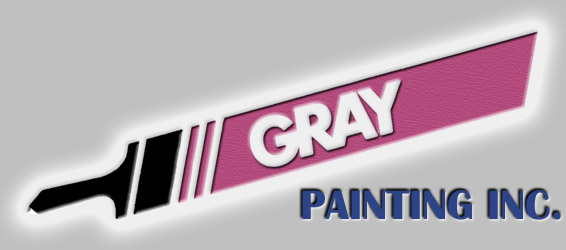What are the advantages of flat and lower sheen paints?
- They provide even light reflection, to give the surface a softer, more uniform look.
- They don’t highlight surface imperfections like higher sheen paints, so they usually don’t require as much surface preparation (like patching, texturing or sanding) prior to painting.
- They are much less likely to show ‘lap marks’, so they are generally easier to apply and touch-up than higher sheen paints. (When one painted section dries before the next section is painted, the two sections won’t flow together into a uniform film, resulting in a ‘lap mark’.)
- They don’t need to be sanded or de-glossed before repainting, unlike higher sheen paints.
What are the disadvantages of flat and lower sheen paints?
- They are less stain and scuff resistant than higher sheen paints, so they should not be recommended for high-traffic areas or on surfaces that will be handled, washed or scrubbed frequently.
- They are less washable and less moisture resistant than higher sheen finishes, so they are not the best choice for areas that are exposed to high humidity levels, or on surfaces that will be washed frequently.
What are the advantages of higher sheen paints?
- They have better stain resistance, so they resist dirt pick-up and stay cleaner longer.
- They have better scuff and wear resistance, so they’re good for high traffic areas and on surfaces that are handled, washed or scrubbed frequently.
- They have better moisture resistance, which makes them ideal for surfaces and areas that are frequently exposed to high humidity levels.
- They have a smooth, bright, more lustrous finish that some people prefer.
What are the disadvantages of higher sheen paints?
- They tend to highlight any surface imperfections, so more surface preparation (like patching, texturing or sanding) will usually be needed before painting.
- They are harder to touch-up than lower sheen paints, because the higher sheen tends to highlight the slightly raised surface of the film where the touch-up was done.
- They usually need to be sanded, de-glossed or primed prior to repainting, to ensure good adhesion of the new paint.
Should I use latex or oil paint?
Latex paint is a great choice for most instances, but there are still situations where a solvent-based paint may be preferable. To help decide which is best in your case, consider the following:
What are the advantages of latex paints?
- They have a less objectionable odor, which makes them good for repaints and painting in occupied areas, where solvent odor is an issue.
- They clean up with soap and water; there’s no need to work with hazardous and/or flammable solvents, and no used solvent to dispose of afterwards.
- Latex paints dry faster, and can be recoated sooner; this makes them a good choice for painting in occupied areas, where someone might touch or brush up against the freshly painted surface.
- Latex paint binders hold up better in sun-exposed areas, because they’re more resistant to UV (ultraviolet) radiation; alkyd and oil binders will absorb more of this radiation and break down more quickly.
- Latex paint films are less prone to yellowing over time, especially with white, light off-white and pastel colors.
- Latex paint films are more breathable; they allow small amounts of water vapor to pass through the film, so the chance of blistering is reduced. This is especially important when the surface being painted is slightly damp.
- Latex paint films have better gloss and color retention, so they’ll keep a ‘like-new’ appearance longer.
- Latex paint films are more elastic, so they can expand and contract with the substrate better; this means they’ll be less likely to crack and peel over time.
What are the advantages of solvent-based paints?
- Solvent-based paints are less sensitive to application conditions, which means they can be applied over a wider temperature and humidity range (however, the surface must still be dry for good adhesion).
- Solvent-based paints can be applied in a thicker coat with less sagging, for better coverage.
- Solvent-based paints have better flow and leveling characteristics, so they’ll dry to a smoother finish, with fewer brush or roller marks (this advantage is reduced somewhat for low V.O.C. alkyd paints).
- Solvent-based paints provide better surface penetration, especially on weathered wood; this means improved adhesion and better surface protection.
- Solvent-based paints have better adhesion on smooth surfaces.
- Solvent-based paints initially have a sharper, richer-looking gloss (however, they also tend to lose their gloss faster over time).
- Solvent-based paints initially provide a harder, more durable finish (however, they also tend to become more brittle over time).
Gray Painting Inc. 11034 Shady Trail Drive Suite # 124 Dallas, TX 75229
Gray Painting Inc. Copyright 1970 – 2021 All Rights Reserved
